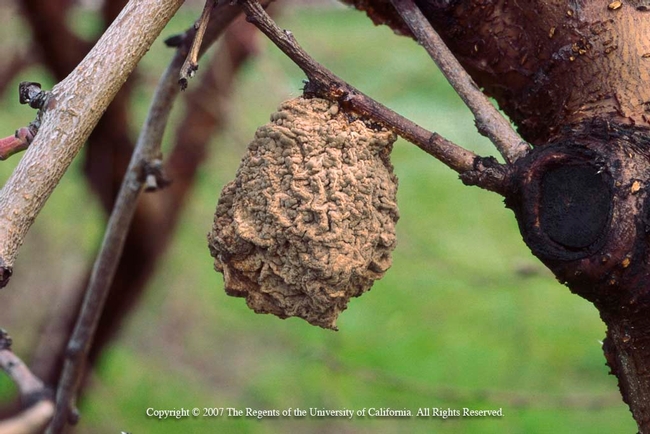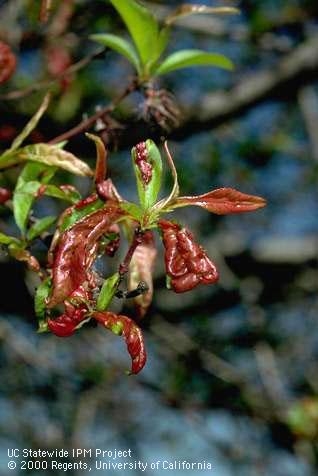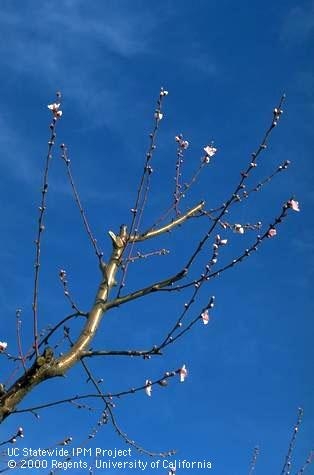Fruit mummies can harbor spores, fungus, and diseases which can ruin crops. (Photo credit: Jack Kelly Clark)
Remove and destroy all mummified fruit hanging on tree branches or littering the ground. Although they look harmless mummies can harbor spores, fungus, and diseases which can ruin crops. Stop the cycle of infection by removing these mummies and destroying them, not composting them.
Distorted leaves with red blister-like swellings from leaf curl fungus on a peach tree. (Photo credit: Jack Kelly Clark)
Peach branch with approximately 10% of buds at full bloom stage. (Photo credit: Jack Kelly Clark)
For more information on winter, spring and summer care of your peach and nectarine trees see the University of California Agriculture and Natural Resources (UC ANR) Publication 7261: Peaches and Nectarines: Calendar of Operation for Home Gardeners.
For further assistance contact your local UC Master Gardener Program.
Sources:
http://homeorchard.ucanr.edu/Fruits_&_Nuts/Peach/
http://anrcatalog.ucanr.edu/pdf/8057.pdf
http://www.ipm.ucdavis.edu/PDF/PESTNOTES/pnleafcurl.pdf (Pest note7426)
http://www.ipm.ucdavis.edu/PMG/PESTNOTES/pn7481.html


